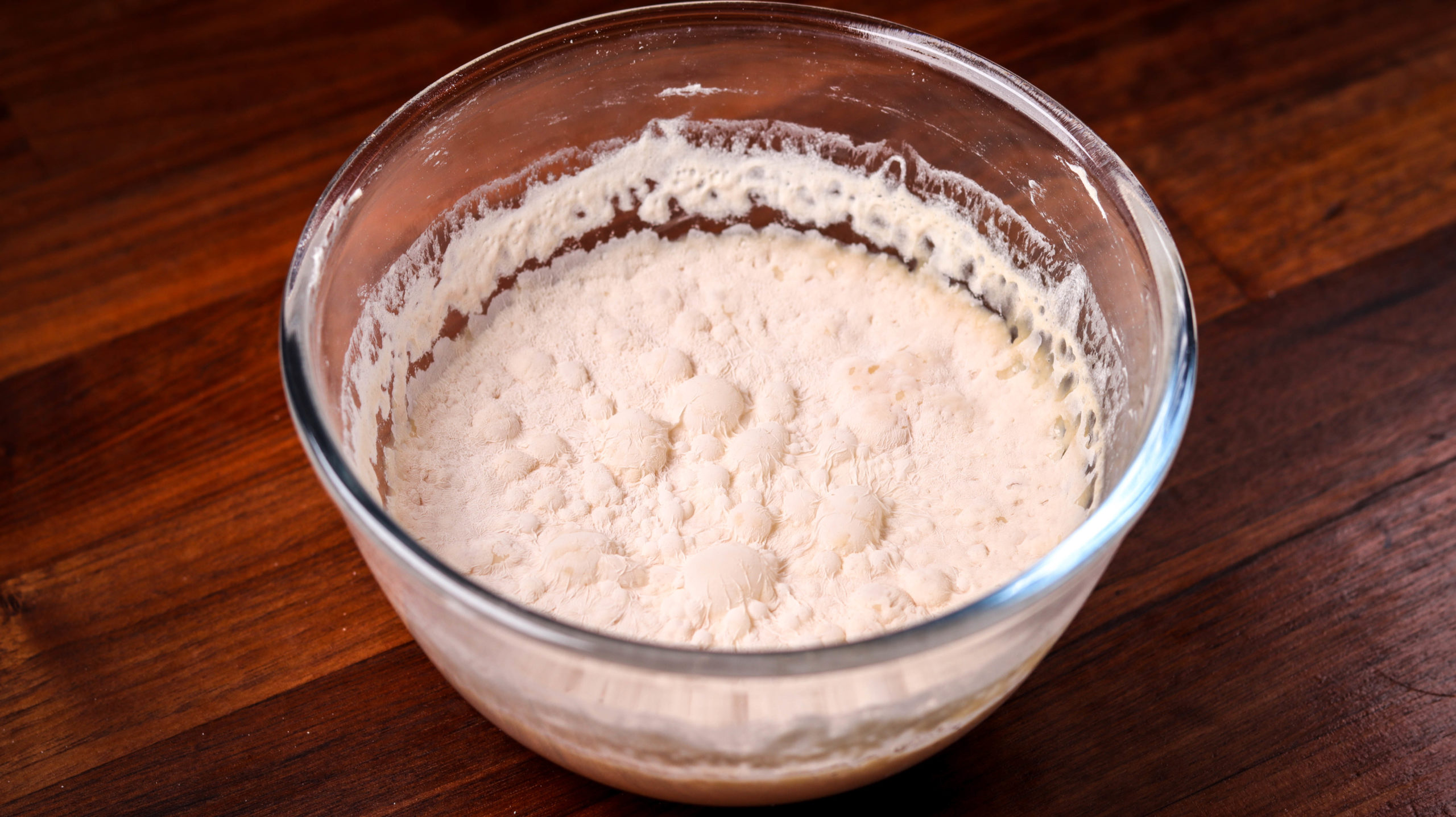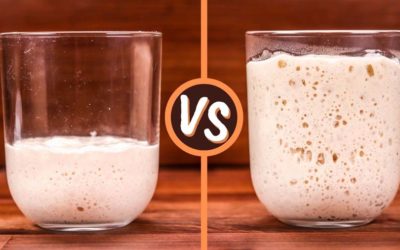If you have kept a sourdough starter for a long time, then you know all too well how often it must be fed and what temperature, flour, and water it likes and performs best with.
You would have had the need to store it somehow when you went on vacation. Most of us just feed it and pop it in the fridge. The cold temperatures slow down the activity and the fresh flour added is enough food for the slow starter to keep it going for a long time.
Some bakers like to keep their starter in the freezer. Some brush a thin layer of it on baking paper, let it dry out and then turn it into a powder that then can be mixed with fresh flour and water and brought back to life.
I have never worried too much about it. There have been times that my starter was kept in the fridge for several months, and it still came back every time. I even left a piece of it in the fridge for a whole year just to see what would happen and it still came back with a couple of feedings.
Starters are indestructible.
It is safe to say that a starter is hard to kill. I would even go as far as saying that a starter is impossible to kill accidentally. You could kill it if you tried to, but that would just be pointless.
So, this video is for the many bakers who have told me that at one time or another they have killed their starter. No, you did not kill your starter. You just did not feed it correctly to make it active again or you did not persist and gave up too soon.
Saying that, I do appreciate that young starters are more susceptible to be overtaken by unwanted bacteria that could mess them up. But if refreshed over several feedings even those could come back to life and the yeast and lactobacilli would prevail.
If it is kept in the fridge and it has no mould on it, then it will come back to life guaranteed.
What is a starter really made of?
Flour and water, right! It’s not that simple though. At first it is just a mix of flour and water, but after a couple of days or even just one day a culture starts developing.
Now, the origin of the wild yeast is up for debate. Some say that it is absolutely everywhere including the air we breathe. Some say that it mostly comes from the flour. I am not a scientist, but I would lean towards it being in the flour since it is the yeast that ferments flour.
Some people love to treat it as this mythical thing that must be captured somehow and raised like a baby to grow big and strong. They often add ingredients like honey, grapes, apples, even pineapple, etc. While it is true that fruits and vegetables are covered with yeast, it may not be the yeast that we want to populate our starter. Those ingredients can be used as additional nutrition for the starter, but they are by no means necessary for its development or survival.
How does it develop into an active thriving culture?
All that is need is flour, water, time, and consistency. If the flour that you use is fresh (as in not old or gone off), then it should be full of yeast cells and not populated by harmful bacteria or mould. This is important since at the first stages of development the starter is susceptible to all kinds of nasties occupying it.
It must be fed and refreshed regularly so that it can stay acidic and keep the baddies out. The way that it prevails and becomes successful is that it multiplies and dominates the space preventing anything else from living in it.
Use clean utensils and practice good personal hygiene to avoid contamination.
Acidity is the key for its survival. The two main inhabitants of the starter are wild yeasts and lactobacilli. The bacteria are important in that they produce acids like lactic acid and acetic acid which lower the pH of the starter. The low pH is what gives sourdough its sour flavour.
An acidic environment eliminates pathogens like enterobacteria or staphylococcus. It is the same principle that gave us techniques of preservation for foods like sauerkraut, kimchi, and pickles.
The acidity of the starter acidifies the bread itself and it stays mould free for far longer than yeasted bread because of it. I have never had a sourdough bread go mouldy in my home. It just becomes stale as it ages.
Yeast produces alcohol (ethanol) which the lactobacilli tolerate. The lactobacilli produce acids which the wild yeasts tolerate. And to tie it all together wild yeasts produce enzymes as they reproduce which convert the starch in the flour to simple sugars that the yeast as well as the lactobacilli feed on. It’s symbiosis.
Lactobacilli outnumber the yeasts by as much as 100 to 1 in your starter.
Why does my starter look and smell weird?
If a starter is left unfed for a long time, then the yeasts and bacteria will consume all the food that is in it. There is only so much starch than can be converted to edible sugar. As it starts starving it produces hooch. It is a liquid often brown and sometimes even black in colour which settles on top of the starter.
The only reason for it appearing is that the starter is not fed enough or not fed regularly. The higher the hydration of the starter the more likely it will produce hooch. Along with looking strange, it can also smell weird. Old unfed starters do become quite acidic and cheesy.
My starter always gets a layer of hooch when I keep it in the fridge for a long time. There is nothing wrong with it though. The hooch can be stirred back into the starter and the feeding process can resume.
This layer of acidic and mildly alcoholic liquid protects the exposed starter from bacterial growth. When you see it in the fridge do not worry and leave it undisturbed if you are planning to leave the starter in the fridge for longer.
How can I tell if my starter is mouldy?
Mould is easy to spot. It is fuzzy and can be black, grey, green, or even pink. It will smell musty and stale kind of like old socks. I know some people love to refer to the smell of a starter as being like old socks. Don’t confuse sweaty feet with old socks is what I say.
If you suspect that your starter is mouldy, then it is best not to take any chances and just discard it and start over. It takes very little time to make a new one and the sentimental value is not worth getting sick over.
Why did I abuse my starter so badly?
I wanted to show you that a starter is very resilient and hard to kill. So, I left mine at room temperature for more than three weeks while I was on vacation.
When I came back, I discovered it covered in a semi-dry white layer of something. It was kind of rough and veiny and there were bubbles all over the surface. To be fair, I had never seen this, and I did not know what it was. But it definitely did not look or smell like mould.
Some research led me to the answer. It is a type of aerobic yeast that forms when sugar is completely used up and the pH of the starter drops because of lactic acid formation. It is just another form of the wild yeasts in the starter. When nutrients are depleted the yeasts swich to this filamentous form.
So, I just mixed it back into the starter and made a leaven. The first rise took 24 hours. On the second feeding it rose in just 10 hours and was ready to be added to a bread dough. The bread came out awesome!
If you want the recipe, it is here. I skipped the autolyse this time. It’s not really necessary here. And I had to ferment it for longer probably because my starter had not recovered from the abuse.
Don’t abuse your starter, please.
Watch the video here



